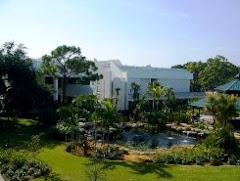Wiggins, R, Remley, J, & Klingler, T. (2006). Building a local CMS at Kent State. Library Hi Tech, 24(2), doi: 10.1108/07378830610652121
My first though after reading this article was what a talented web team KSU Libraries had to complete this undertaking, how much insight they needed to develop a plan from a holistic level to the most detailed, and how lucky they were to pull it off without any major failures (at least that were reported.)
In the early 2000s, only a few years before this article was written, I was a member of a committee that redesigned our university library’s pages. At that time we were not concerned about dynamically created content or statistical reporting, but only concentrated on the look and feel of the static pages. Looking back, and comparing it to this article, our attempts were very naïve—little management of the site; form definitely took precedence over functionality. If I had reported on the process at the time, I would have had to tell of committee squabblings and discussions on whether icons should be clip-art or reality based. We also had usability testing, bribing students and staff with pizza, but were unable to offer any monetary compensation. (pizza must be the universal enticement at colleges). Only a year or so after the grand unveiling of the new, improved website, the university had a branding campaign, and all our work was scraped.
One idea that intrigued me, as a future enhancement for Kent’s system, was the possibility of faculty adding their own class pages as content resources. A very collaborative idea! I haven’t yet seen catalog tagging by users in any of the local systems I frequent, but perhaps tagging with links to a faculty’s content pages? As an instruction librarian I frequently recommend specific books and add them to a LibGuide created for a specific class assignment. Could a catalog result be cross-linked to a specific LibGuide to explore additional resources?
One thing that surprised me was Kent’s requirement for their CMS to only allow staff access to a WYSIWIG editor when creating content. I have been frustrated when using WYSIWIGS, and have been very grateful when I can open the html and see the coding. Maybe there are more perfect utilities that don’t get a mind of their own and add unwanted code, but in my limited experience I have found the html editing tool very valuable.
The article was a great introduction to the possibilities of the uses of a content management system beyond a storage and retrieval system.

No comments:
Post a Comment